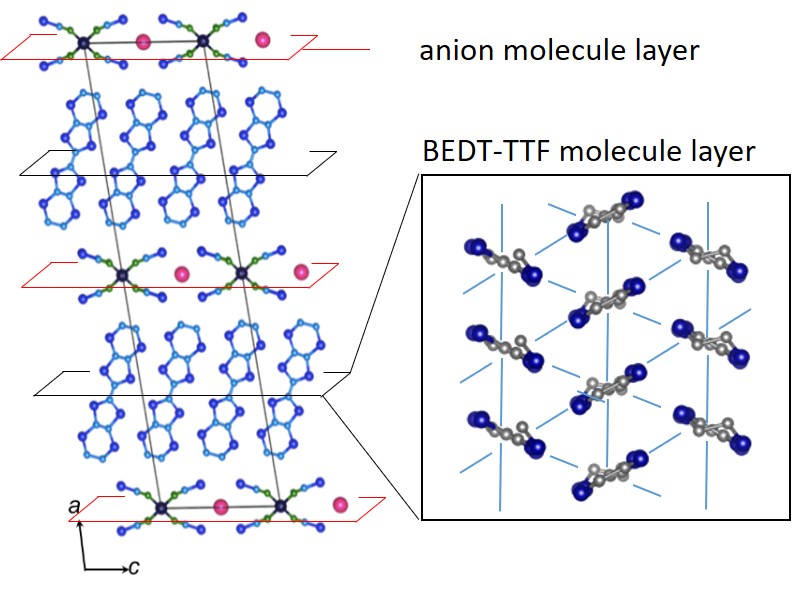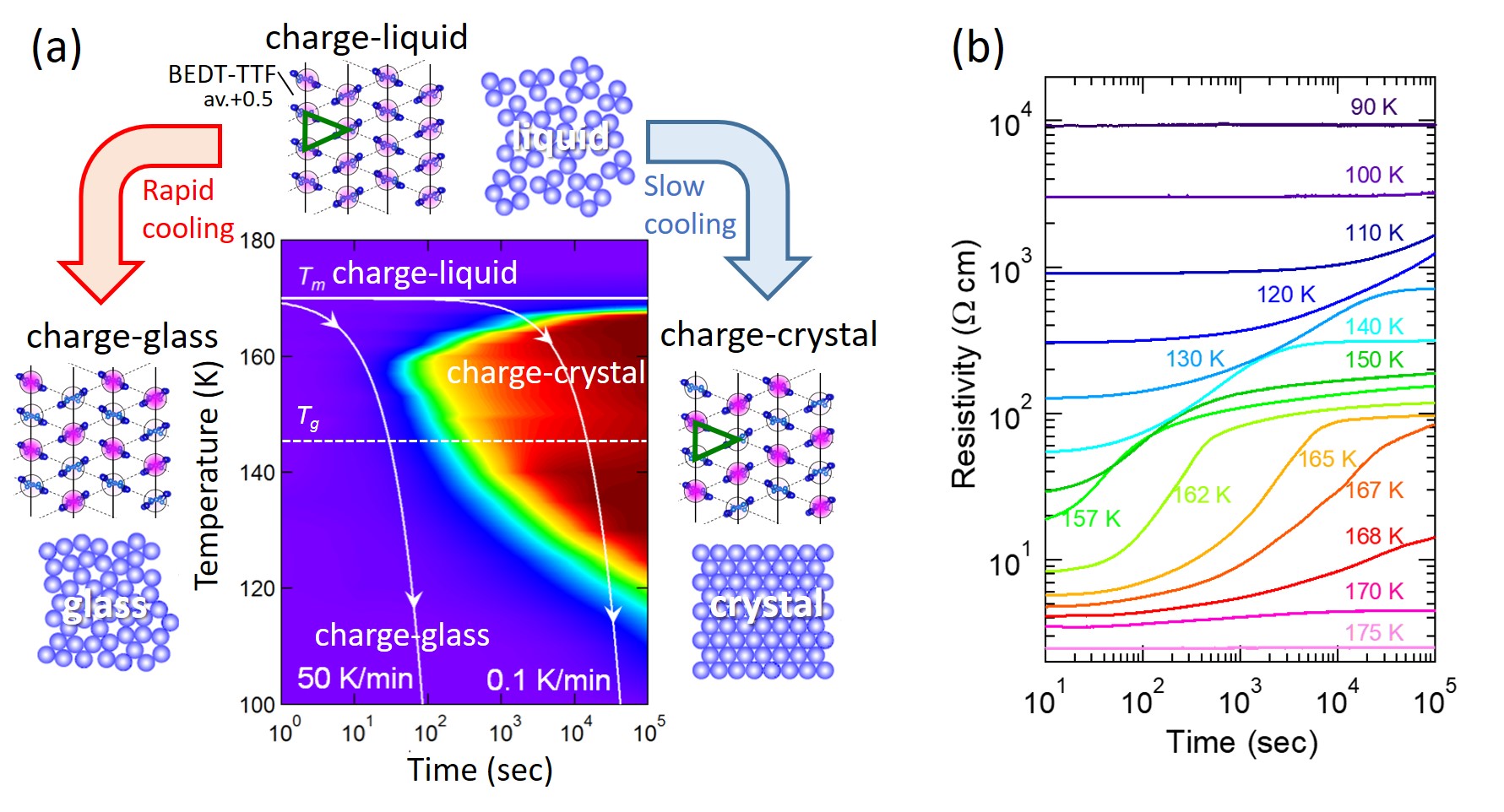Topics
2020.5.1
Emergent properties of correlated π-electrons
Condensed Matter Physics in Molecular Materials Group
In general, characteristic physical properties of the organic materials assembled by molecules are thought to be electrical insulating and mechanically flexible like as plastics. These properties result in the microscopic electronic states of organic materials in principle. In the meantime, there exist some interesting groups of organic materials which show functional electronic properties as high electrical conductivity and characteristic magnetism. One can produce soft electronic devices like as organic transistor, organic LED etc. using characteristic properties of light weight, flexibility and electronic functionality. Main research subjects in this group are the experimental investigations on the novel electronic states emerging in the organic molecular materials. We are actively studying the interesting and important issues on the condensed matter physics from the viewpoint of the combination between the characteristic flexibility of the lattices and strongly correlated π-electrons in the organic materials. We introduce recent research topic on understanding how π-electrons in solids turn to glass.

Figure 1 shows the crystal structure of molecular organic material θm-(BEDT-TTF)2TlZn(SCN)4, which is assembled by BEDT-TTF molecules. The organic material has a periodic structure and then possesses a nature of crystal. BEDT-TTF molecules form a two-dimensional triangular arrangement. Overlapping of π-electron orbitals among BEDT-TTF molecules induces high electronic conduction in the two-dimensional layer. This BEDT-TTF layers are sandwiched by anion molecule layers of TlZn(SCM)4. The material has a high electrical conductivity at room temperature. But it turns to an insulating state of charge ordering (CO) at 170 K, owing to strong inter-site repulsive interaction among π-electrons and its geometrical frustration on the triangular arrangement of BEDT-TTF molecules.

Glassy materials are ubiquitous in nature. The history of glassmaking traces back thousands of years and sophisticated glass-forming technology has been utilized by mankind for centuries. Yet, the fundamental understanding of glassy dynamics remains one of the most important unresolved problems in both physics and materials science. We focus on a unique glassy state of π-electrons in molecular solids realized in an organic molecular conductor of θm-(BEDT-TTF)2TlZn(SCN)4 [1, 2]. CO insulating state of this material at low temperatures can be regarded as a “charge-crystal” state. In contrast, above the CO transition temperature, the charge is distributed uniformly in space referred to as a “charge-liquid” state. When the sample is cooled faster than a critical cooling rate (~50 K/min), charge crystallization is kinetically avoided, leading to a “charge glass” state where the charges are randomly quenched. We quantitatively evaluated the CO volume fraction from the time evolution of the resistivity during the charge crystallization process from the super-cooled charge-liquid or charge-glass state. Surprisingly the glass – crystallization process indicates a long-time dependence with the order of seconds to hours and to several days. Such long time scale dynamics of π-electrons are not predicable within traditional idea of electron physics. Our observation demonstrates that the crystallization process of electrons in solids can be described by the nucleation and growth process of a liquid, as observed in conventional glass-forming liquids. Surprising similarities between our system and conventional glass formers highlight the universal nature of the liquid-glass transition.
[1] S. Sasaki et al., Science 357, 1381-1385 (2017).
[2] K. Hashimoto and T. Sasaki, Kotaibutsuri (in Japanese) 53, 745-758 (2018).

